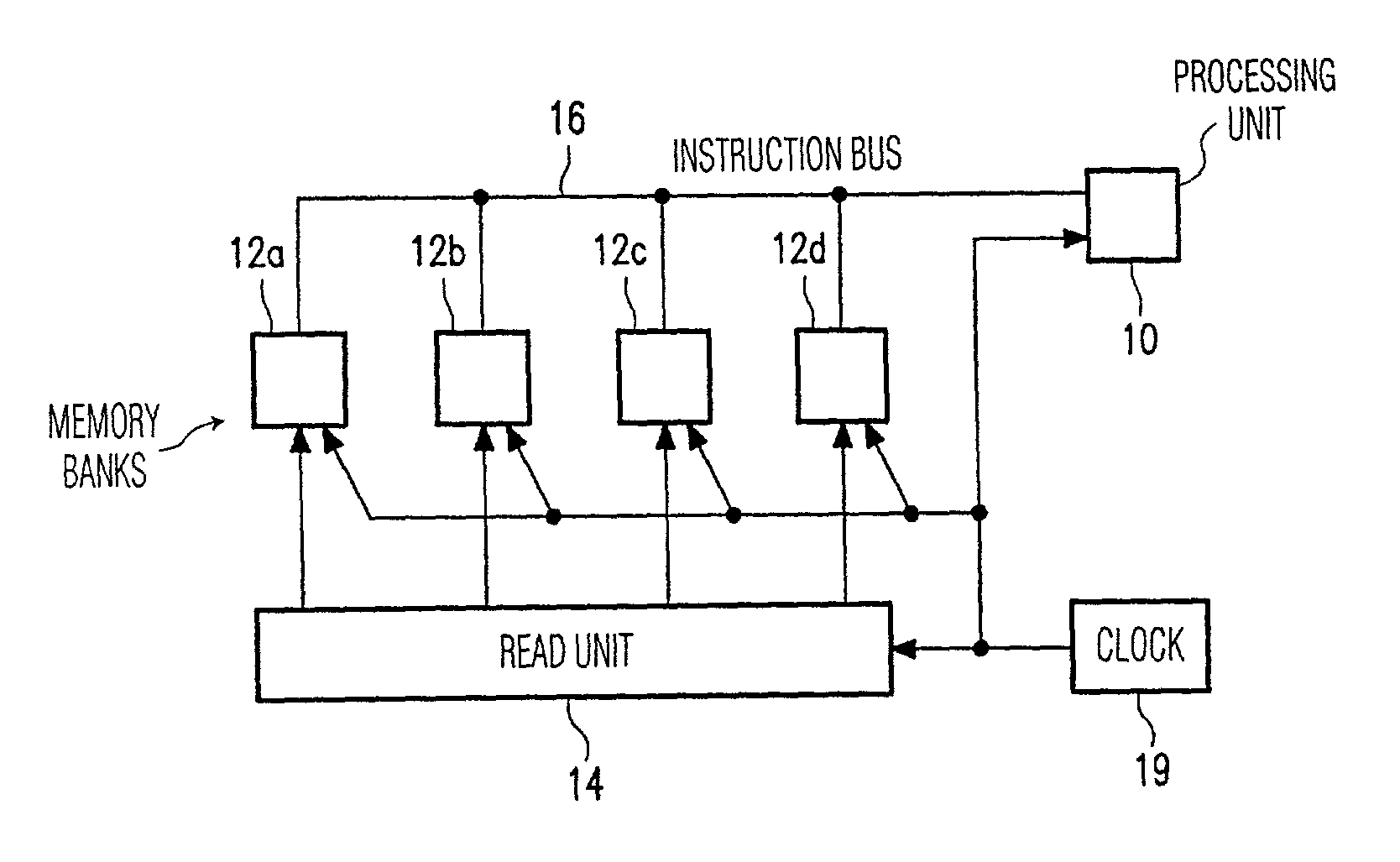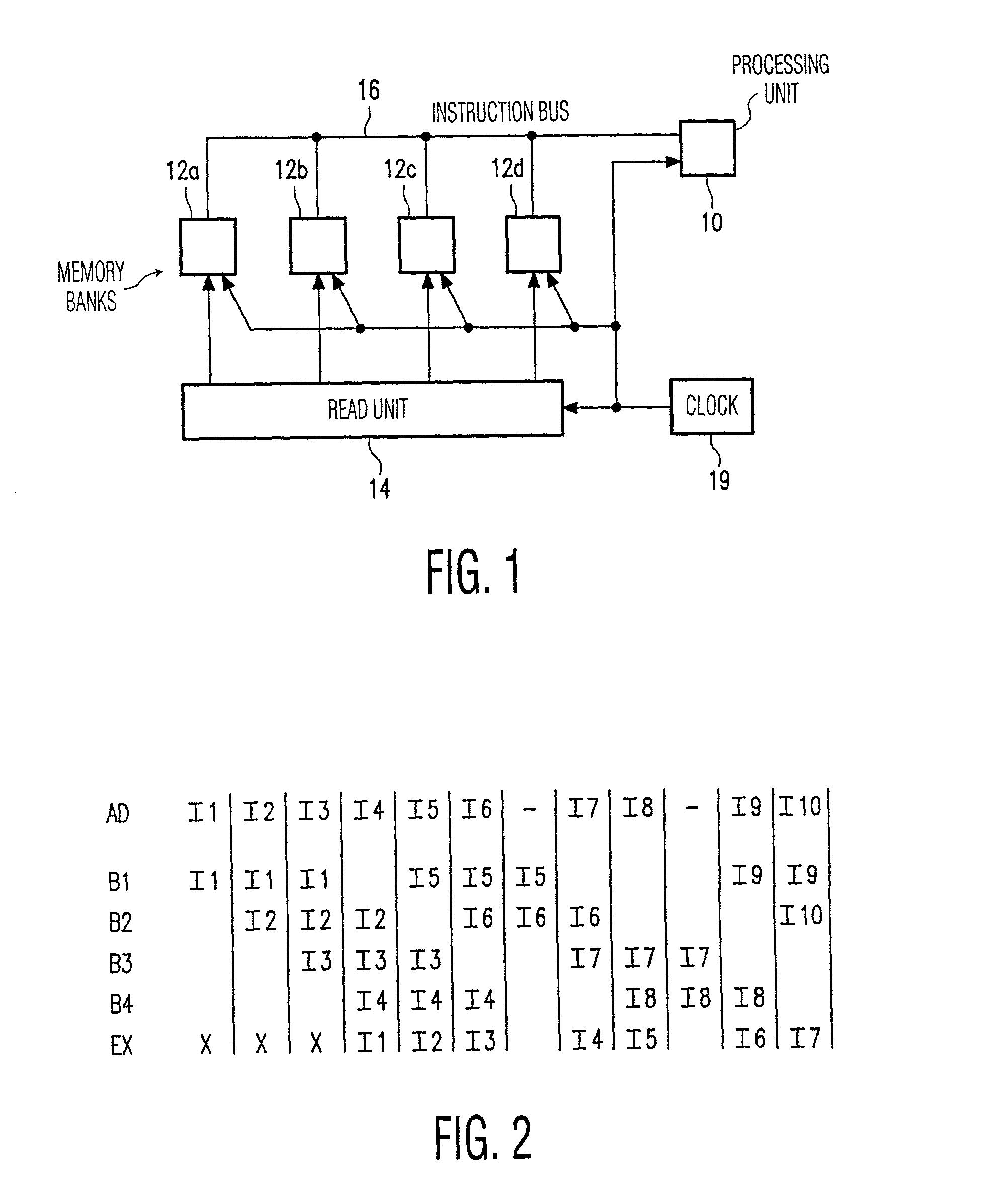Processor architecture with independently addressable memory banks for storing instructions to be executed
a processing device and memory bank technology, applied in the direction of memory adressing/allocation/relocation, instruments, program control, etc., can solve the problems of memory bottleneck, comparatively expensive cache memory, and restricting the overall speed of the processing device, and achieve the effect of less overhead
- Summary
- Abstract
- Description
- Claims
- Application Information
AI Technical Summary
Benefits of technology
Problems solved by technology
Method used
Image
Examples
Embodiment Construction
[0028]FIG. 1 shows an embodiment of a processing device according to the invention. The processing device includes a processing unit 10, a memory with a number of memory banks 12a–d, a read unit 14 and a clock 19. The read unit 14 has a number of address / selection outputs, each of which is coupled to a respective memory bank 12a–d via an associated address / selection connection 18a–d. The memory banks 12a–d are connected to an instruction input of the processing unit 10 via an instruction bus 16. The clock 19 is coupled to the read unit 14, the memory banks 12a–d and the processing unit 10.
[0029]FIG. 2 shows a timing diagram relating to the operation of the processing device shown in FIG. 1. The read unit 14 addresses successive memory locations in successive clock periods (also referred to as instruction cycles or read cycles). The trace bearing the label AD indicates per clock period which memory address (I1, I2, . . . ) has been selected Memory locations having successive memory a...
PUM
 Login to View More
Login to View More Abstract
Description
Claims
Application Information
 Login to View More
Login to View More - R&D
- Intellectual Property
- Life Sciences
- Materials
- Tech Scout
- Unparalleled Data Quality
- Higher Quality Content
- 60% Fewer Hallucinations
Browse by: Latest US Patents, China's latest patents, Technical Efficacy Thesaurus, Application Domain, Technology Topic, Popular Technical Reports.
© 2025 PatSnap. All rights reserved.Legal|Privacy policy|Modern Slavery Act Transparency Statement|Sitemap|About US| Contact US: help@patsnap.com



